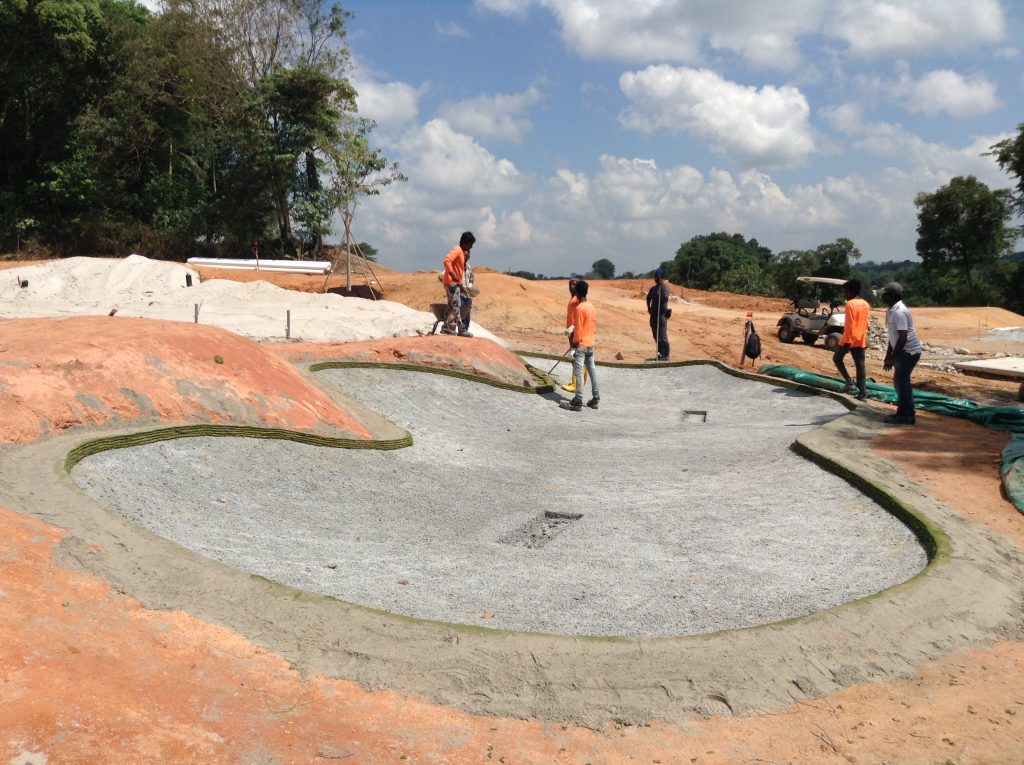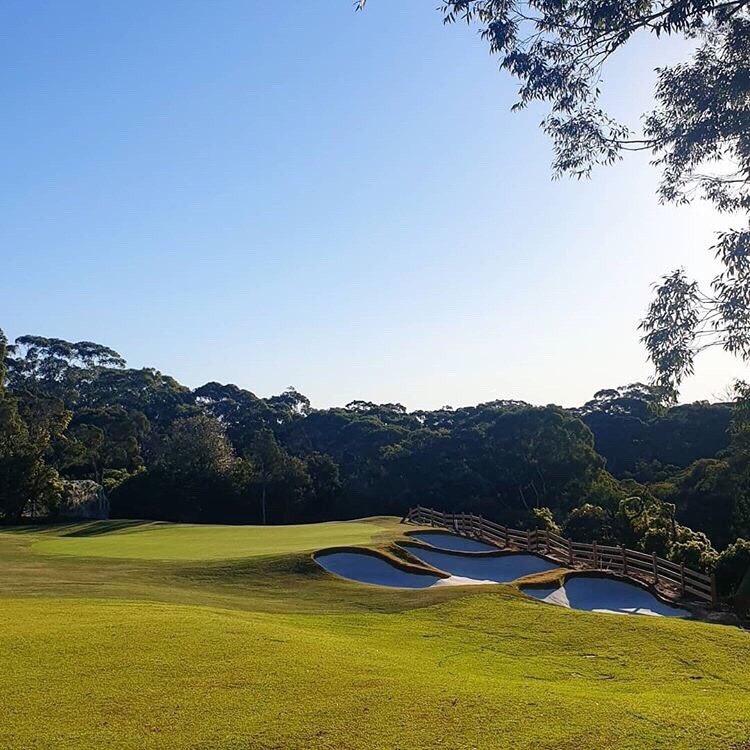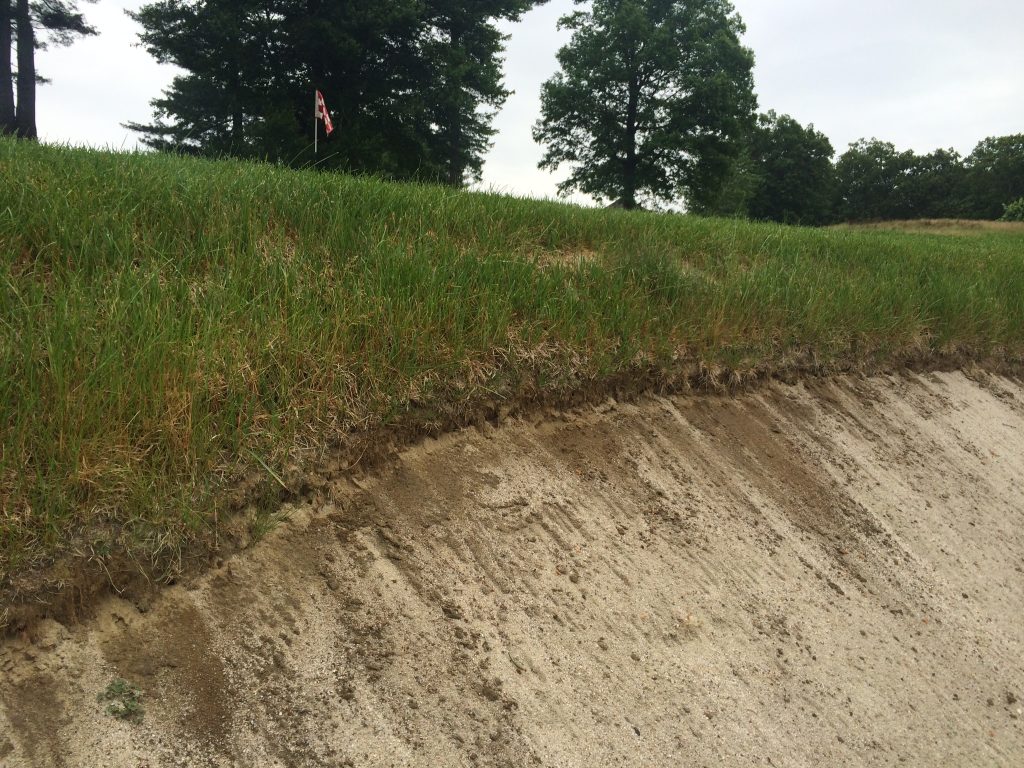How to increase the life expectancy of a bunker
Related Articles
Bunker renovation can be costly and the design life of a bunker is usually five to seven years. However, according to Richard Allen, the life expectancy can be considerably, and affordably, extended if just a few principles in the design stage are adhered to.
A passing comment on social media about a long-lost treasure that has been searched for and never found has been adopted enthusiastically by a few golf industry professionals engaged in the art of bunker construction. The real Holy Grail may never be found, but the elusive solution to low maintenance, highly resilient golf bunkers is now available to any golf course. So how do you find the ‘Holy Grail’ of golf bunker construction?
The search must start with design. Good design, carried out by suitably qualified and experienced professionals is the best insurance policy you can buy.

Construction of a bunker at Singapore Island Country Club this October
Changes at the design stage cost virtually nothing to fix. Problems during construction, or worse still, after commissioning, are normally very costly. I got into the golf construction industry because of the crossover between my profession (a civil engineering designer) and my passion (all things golf). The classic engineering design process starts by understanding the client’s brief and budget, then studying the constraints and opportunities (for example ground conditions). The design process should finally produce documents which enable any competent contractor to deliver a project that matches the client’s wishes, within budget, safely, compliant with relevant regulations and on time. Furthermore, the finished works should perform perfectly and be easily maintained during the ‘design life’.
‘Design life’ is the key phrase here. I don’t think I’m out of line by suggesting that in general the golf industry accepts that the design life of a golf bunker should be five to seven years) or less on some exposed sites). Why? Is it the historic lack of resilient bunker construction products (see later)? The consequence is usually that after five to seven years the golf club cannot afford a new bunker renovation scheme. Nothing performs well beyond its ‘design life’ and bunker results are predictable: exponential maintenance increases and patch repairs. Bunkers quickly turn from assets into liabilities. So, find a longer design life (within your budget) and you are getting closer to the Holy Grail.
It may sound simple to do this, but until relatively recently, very few ‘long term’ bunker products and construction techniques were available to greenkeepers and course managers. Why did advances in bunker construction lag behind major advances in agronomy, irrigation and machinery? Perhaps bunkers were viewed as hazards (a valid viewpoint) that should not routinely present perfect playing conditions.

Killara Golf Club in Australia, which led to complimentary ‘Holy Grail’ comments about the bunkers on social media. The club wanted high sand faces and exposed deep edges. Capillary Concrete solved the sand faces issue, and the EcoBunker Advanced system provided the desired aesthetics and erosion control qualities
However, bunkers have increasingly been identified as the weakest area of most golf courses, and in response, a diverse range of new ideas and products have entered the market. First came geotextile (commonly referred to as fabric) liners followed soon by bound aggregate (such as Capillary Concrete) and rubberised options led by blinder. Then came improved drainage products such as Aquadyne, and finally attention turned to bunker edging and facing products, including in 2010, the innovation of using recycled artificial grass.
The ‘Holy Grail’ of bunker construction combines all these technologies to produce a bunker that drains perfectly, under the most severe rain, retains its shape (because edges resist erosion), preserves sand purity and holds that sand in place, resisting the dreaded washouts. Very often, this form of bunker system is referred to as fully sealed, but is perhaps better described using engineering terminology as ‘tanked systems’. So what are the key drivers, features and benefits of a tanked bunker system?
Firstly the bunker edge. Traditionally bunkers have a natural soil edge, either flush with the sand, or exposed to varying height. Extreme examples are revetted (or sod wall) bunkers, although many heathland and parkland courses use a soil edge of four (100mm) to 12 inches (300mm). Soil edges are highly vulnerable to erosion. Fines enter the sand, compromising the bunker drainage systems’ aesthetics and playability. Erosion commonly changes the shape of a bunker, occasionally exposing the bunker liner, irrigation system or becoming unsafe. A proven solution to extend the design life of bunker edges is to use stacked synthetic grass. Based upon evidence gathered over the past five years, the EcoBunker Advanced system appears to perform best, having resisted multiple Category 5 hurricanes (the ultimate test) with no damage.
Secondly, the bunker liner, or base of the tank. There is a bewildering array of bunker liners on the market. Only consider bunker liners that can keep the sand in place and clean, prevent washouts, protect any underlying drainage and allow easy bunker raking without damage. An added benefit would be the ability to condition sand to the optimum moisture content.

Sand contamination from eroding soil edges
If we are looking to include all these qualities and increase the bunker design life to 10 years or more, that narrows the choice somewhat. The design process will help make the correct choice: budget, construction period, in-house or contractor install, local ground conditions, the bunker style and shape, locally available raw materials, long term maintenance capability, requirement of a warranty and so on. Apart from style and shape, this is primarily an engineering design function, although many golf course architects are now becoming more familiar with the technicalities of bunker lining systems.
Finally, where can the Holy Grail be found? At EcoBunker, we have done multiple fully tanked systems across the globe, all using our bunker edging system. Successful results have been obtained with all kinds of liners; rubber crumb, bound aggregate and even geotextile options on courses where bunker design is conducive to that approach. However the first bunker project where the Holy Grail comment first appeared on social media was Killara Golf Club near Sydney, New South Wales, where EcoBunker edges were combined with Capillary Concrete. The club wanted high sand faces, and exposed deep edges (resembling the Melbourne Sand Belt).
Capillary Concrete solved the sand faces issue, and although local soils were unsuitable for a deep bunker edge, the EcoBunker Advanced system provided the desired aesthetics and erosion control qualities.
The path to the Holy Grail starts by employing a suitably qualified design professional, as I’m sure, Harley Kruse, the designer of the Killara renovation project, would agree.
Richard Allen is an engineer and CEO of EcoBunker

























